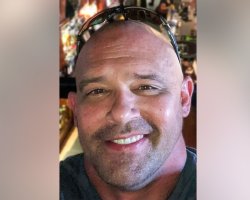Arizona Bears Brunt of New Cartel Push of Fentanyl and Methamphetamine

One of the most constant elements in the struggle to eliminate illicit drugs from American cities is the constant ability of drug trafficking organizations to change. They change the drugs they manufacture and traffic. They change their routes, methods of shipping, or the border cities they choose to penetrate with their shipments.
In the decade I have been studying trafficking patterns, these patterns have shifted from Southern California to Texas and finally to Arizona. Each region targeted by drug trafficking organizations suffers from the presence of these highly organized criminal organizations. There’s a greater drug supply in circulation and more humans being smuggled along with the drugs. In some cases, there’s also more violent crime and kidnappings.
Over the last couple of decades, the drugs smuggled have shifted from cocaine to methamphetamine, then American pharmaceutical companies and doctors got into the act, overprescribing addictive opioid painkillers. Drug traffickers followed that lead by manufacturing much more heroin and sending it into our country. This was followed by the rise of incredibly potent fentanyl, slipping into the U.S. from China and then from Mexico.
At that point, it seemed like the entire country geared up to fight the astronomical number of deaths from heroin, painkillers and fentanyl. Finally, the number of deaths stopped growing and began to tip into a slight decline.
How did the drug trafficking world respond? These organizations began manufacturing more methamphetamine and trafficking it across our borders, this time, increasingly through Arizona.
Arizona’s Porous Borders Permit Trafficking

Much of the American border is still wide open, especially long stretches in Arizona. The border is especially open where it passes through the Tohono O’odham Indian reservation in Southern Arizona. The Tohono O’odham people live on either side of the U.S.-Mexico border and pass back and forth with relative ease. The population in this area is sparse—there’s only about 2,000 residents in these 2.7 million acres of land.
Drug traffickers have targeted these open lands, running pickups and SUVs packed with heroin, fentanyl or methamphetamine through the terrain. Mexican cartels also recruit individuals living south of the border who want to enter the U.S. and give them backpacks full of marijuana. Guides pilot these hapless souls through many miles of rough desert landscape until they are far enough into the U.S. that trucks can meet them on the other side and relieve them of their loads. In this region, drivable roads may be many miles apart.
Arizona law enforcement members estimate that they might stop ten percent of these drugs, either at border checkpoints or in the empty desert between these points.
The drugs filter into Phoenix, a major drug trafficking hub. From there, they usually travel along the interstates to other metropolitan areas. In February 2020, the Drug Enforcement Administration included Phoenix on a list of eight cities where methamphetamine would be targeted, along with Atlanta, Dallas, El Paso, Houston, Los Angeles, New Orleans and St. Louis. These eight cities accounted for 75% of the methamphetamine seized in the U.S.
Trafficking Increases Between 2017 and 2019

Despite the best efforts of our drug enforcement personnel, the volume of drugs being run across this border has increased significantly in the last few years. As an example, this image shows more than two hundred pounds of methamphetamine that were seized in Arizona on July 18, 2019.
The following are some statistics showing these increases:
- Between 2017 and 2019, seizures of methamphetamine increased from 49,507 pounds to 112,146 pounds.
- Arrests for methamphetamine trafficking rose 20% during this time.
- In Pinal Country in Arizona, methamphetamine seizures jumped up 3,000% just between 2018 and 2019.
- About 40% of America’s illicit drugs enter through Arizona.
- Between 2017 and 2018, the number of adults aged 26 and older who used methamphetamine increased from 1.2 million adults to 1.6 million.
How Should We React?
How do we fight a plague like this? It’s essential to fight it on multiple fronts. No single front of attack will succeed.
Law enforcement must still apprehend and penalize those who traffic quantities or drugs and those who deal drugs on the street. The drugs that are seized must be destroyed.
Border patrol units must still search and seize drugs at our entry points. The Drug Enforcement Administration must still pursue smugglers, traffickers and doctors who overprescribe addictive substances.
Youth must receive an education on the harm that results from drug use or excessive alcohol use and they must receive it early, before they hear from “friends” how cool drugs are.
Parents must know where their children go and who their friends are. They must support their children by helping them visualize goals they can achieve and then helping them make progress toward those goals. They must also make it clear to their children that drug use or underage drinking will not be tolerated and then follow up with loving attentiveness.
If a person is already addicted, then they need effective help to recover from addiction. When a family has been living with a loved one’s addiction for years, they may have given up all hope of that person ever coming back to them. But in fact, even after years or decades of addiction, recovery is possible. At Narconon drug rehabilitation centers around the world, these miracles happen every week.
Even in the best of cases, there is no way to guarantee that these steps will prevent drug use or addiction. Some people are simply driven to self-destructive habits and even the best education and monitoring will not stop them. However, these and other common-sense or proven actions, consistently applied in our homes and communities, can spare many from the horror of addiction and the risk of overdose death.
Sources:
- https://www.dea.gov/sites/default/files/2018-11/DIR-032-18%202018%20NDTA%20final%20low%20resolution.pdf
- https://www.cdc.gov/nchs/nvss/vsrr/drug-overdose-data.htm
- https://www.theepochtimes.com/cartels-push-huge-amounts-of-meth-fentanyl-into-us_3195050.html
- https://www.usatoday.com/border-wall/story/tohono-oodham-nation-arizona-tribe/582487001/
- https://www.dea.gov/press-releases/2020/02/20/dea-announces-launch-operation-crystal-shield
- https://www.unodc.org/LSS/Announcement/Details/bbfcf8d0-4609-46c3-9bcf-2721622418c


 ®
®